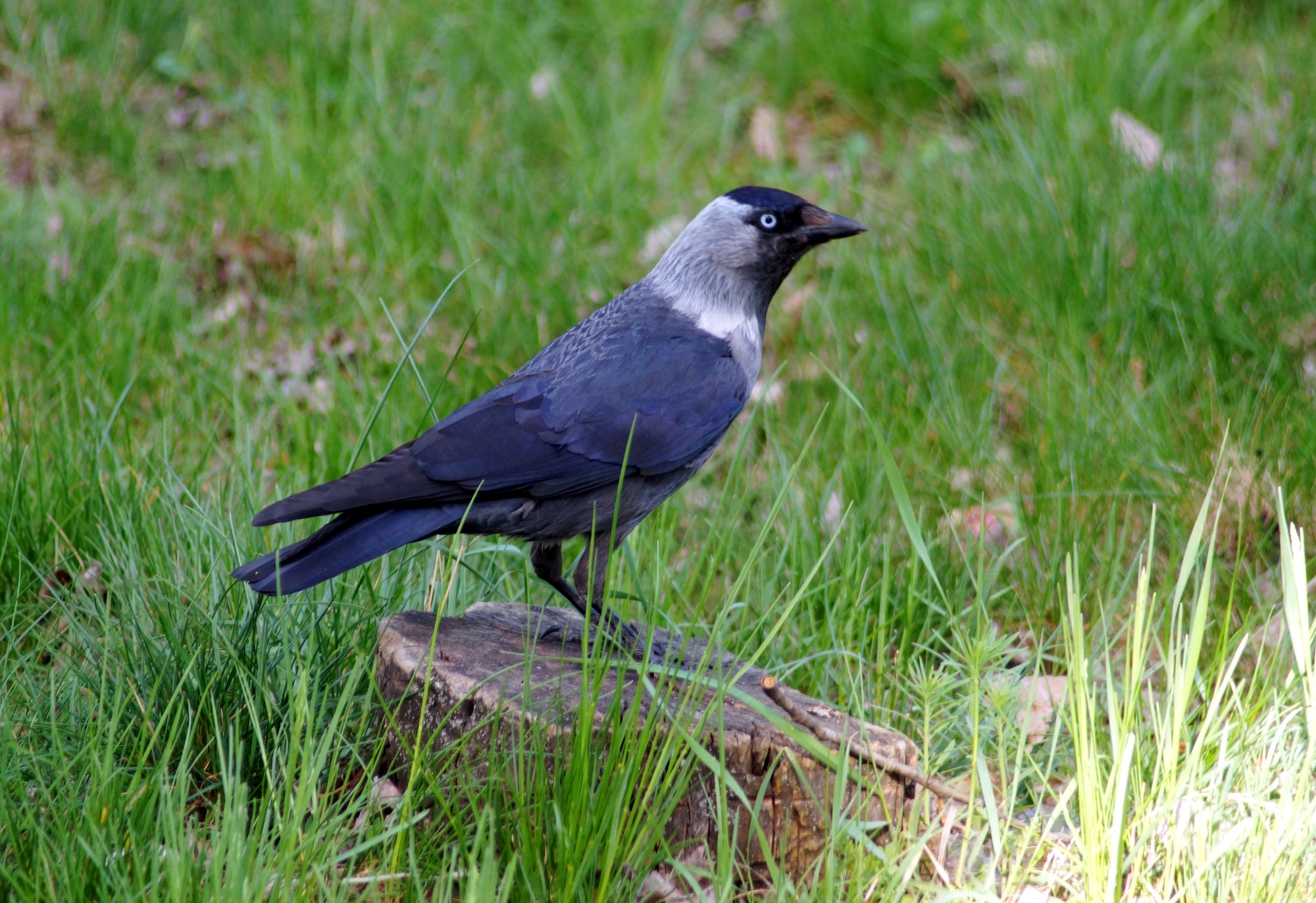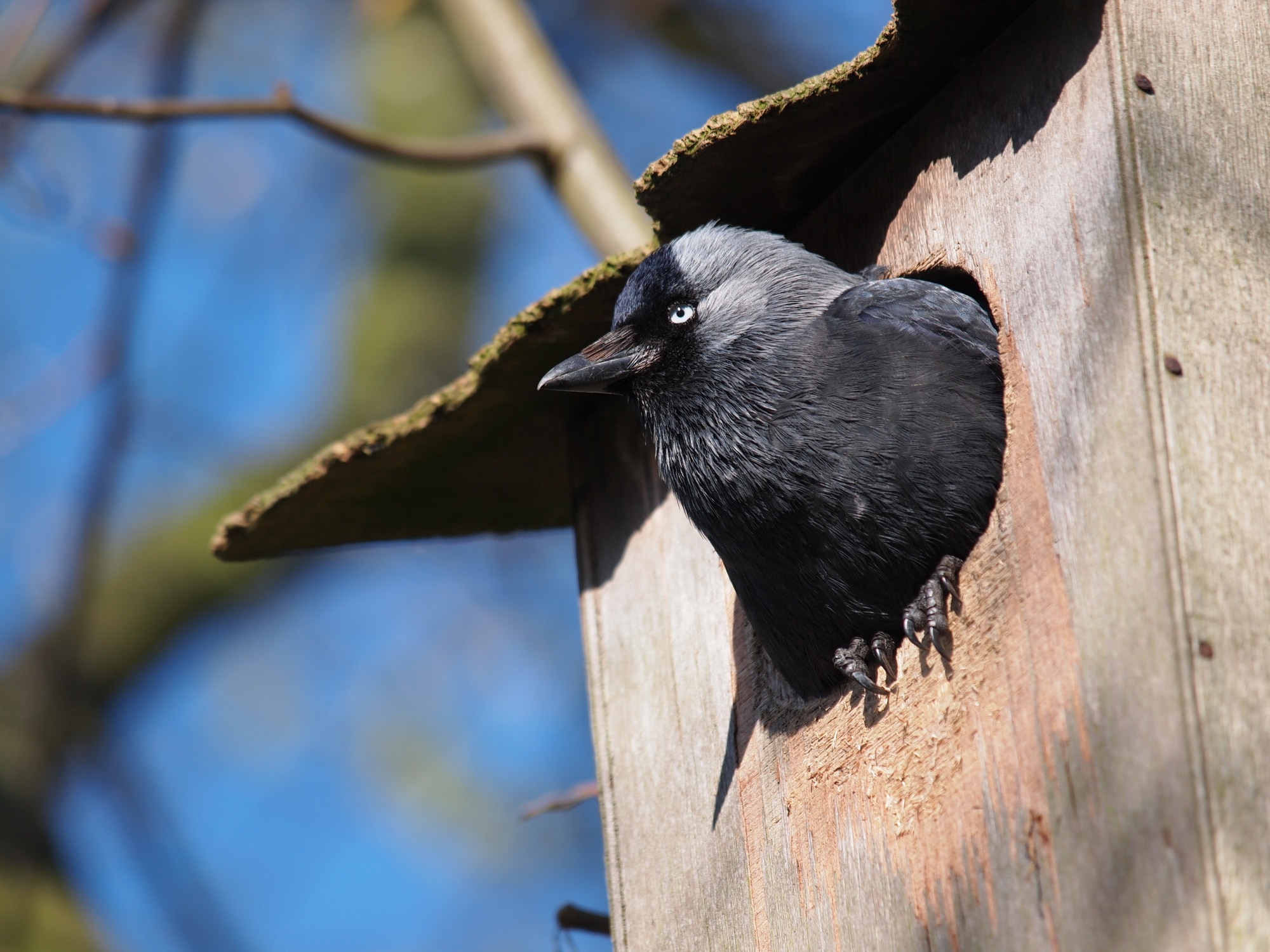The jackdaw (scientific name Corvus monedula) is a passerine bird in the crow family, native to Europe, Asia, Australasia and the Middle East. It is known by many different names, such as the western jackdaw, the Eurasian jackdaw or the European jackdaw. It is possibly the most abundant species of crow in Europe, with an estimated population of over 3 million.
Jackdaws are omnivorous birds that throughout the year migrate from their breeding areas to towns and cities looking for food and water. They can often be spotted in urban areas such as city parks, along roadsides, or standing in trees taking advantage of any scraps they get.
Jackdaws are regarded as a nuisance by the public, although they do not pose much threat if left alone by humans. It should be noted that these birds are protected by law throughout the UK and Ireland under the Wildlife (Conservation) Act 1981.
Jackdaw Identification

The jackdaw (Corvus monedula) is a large bird that has a black head with a light grey shawl, black wings and tail, but a grey body. It has blue-grey legs, and the adults have a strong, short hooked chunky bill. Their upperparts are dark grey with an unmistakable black line running down the back of each bird. The tail is grey with some black feathers at the tip. The young have pale blue eyes which stand out against their black plumage. Eventually, the eyes turn grey and then white.
Jackdaw Behavior
- The jackdaw is a noisy bird that can be heard long before it is seen but is usually silent at night.
- Jackdaws are known for their intelligence and have been shown to make use of tools. They have large brains relative to their size, which aids their problem-solving skills. These are considered among the most intelligent birds on Earth.
- Not only is it known for scavenging food, but it will also often take other birds eggs.
- They will sometimes take over the old nests of larger birds.
- The jackdaw is a gregarious bird and highly territorial. You will often see them in large groups during the summer months, and at other times of the year, you will see small family groups of adults and chicks.
- It is a highly social species living in groups of up to 200 individuals during the breeding season. These groups increase in number up to 1000 or so when you often see them performing aerial acrobatics.
Jackdaw Food And Feeding
Jackdaws eat more than most other bird species. It mainly eats invertebrates, and so its diet consists of insects, such as beetles, slugs, caterpillars and aphids, earthworms, plant material such as seeds and cereals, scraps in towns. A well-known thief, it occasionally takes eggs from other birds nests and even young birds.
In the western Alps where pheasants are released for hunting purposes, the jackdaw will follow the hunters to catch wounded birds. This habit has also been observed in Britain.
Jackdaws will also feed on plant material, including crops such as cherries, hops and hemp.
Are Jackdaws Common In The UK?

Jackdaws are the most common of all the crows in the UK. They nest in holes in trees, open woodland, cliffs or even buildings, and they will form very large flocks which fly and move around a lot when they are not nesting.
What’s The Difference Between a Crow And a Jackdaw?
There is no scientific distinction between the jackdaw and the crow species, which are both classified as ‘Corvus’. The only difference between them is that jackdaws are smaller than crows.
Jackdaws Life Cycle and Breeding

Jackdaws mate for life and have a monogamous relationship. The females are chosen by the males, pairing up to form the perfect jackdaw nest in which to lay their eggs; she lays four to five eggs at a time.
Jackdaw chicks require constant attention from their parents to ensure that they survive. They grow quickly and can be independent after only 7-8 weeks of age. Jackdaw young hatch at any time of year, with an average brood size of two or three chicks. The young do not have fully developed flight feathers until they have left their nest holes at around two months old. Jackdaws can breed at any time of year but do so mainly from March to July and from September to November in Britain.
Sources and References
11 things you never knew about the jackdaw, the bird that just loves people – countrylife.co.uk
Sam loves to learn about animals and their habitats. He has been a nature lover from a very young age, and has been writing papers and articles about wildlife for as long as he can remember.

We have a Jackdaw that visits us up to 4 times a day. It would land on our window sill and tap on our kitchen window, waiting for a bit of a biscuit or a slither of cheese (which it likes). It will not fly away but take the food from your fingers.
Wonderful. Sounds like you have a new friend 🙂
We thought it was a young crow being attacked by bigger crows, as it had wounds all over we didn’t expect it to survive, but it has and now we find that it is a jackdaw and won’t leave, it is free to fly wherever it wants but it will swoop down and land on you if your out in the garden. It’s still young but maybe it will fly off eventually.
It sounds like you’ve had quite an unexpected encounter with this young jackdaw. It’s not unheard of for wild birds, particularly young ones, to form bonds with humans, especially if those humans have helped them in some way.
As the jackdaw matures, it may naturally decide to venture out and join other jackdaws. This could be triggered by an instinct to join a flock, or the need to find a mate. However, this doesn’t necessarily mean it will abandon your garden entirely. It may still return to visit you from time to time.
It’s also important to note that jackdaws can live for many years, so if it does choose to stay, you could have a unique feathered friend for quite some time!